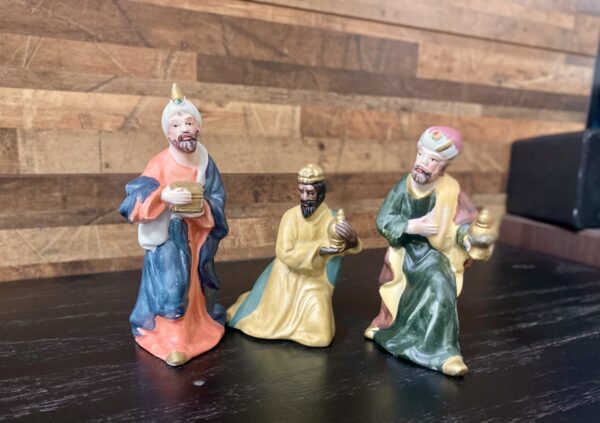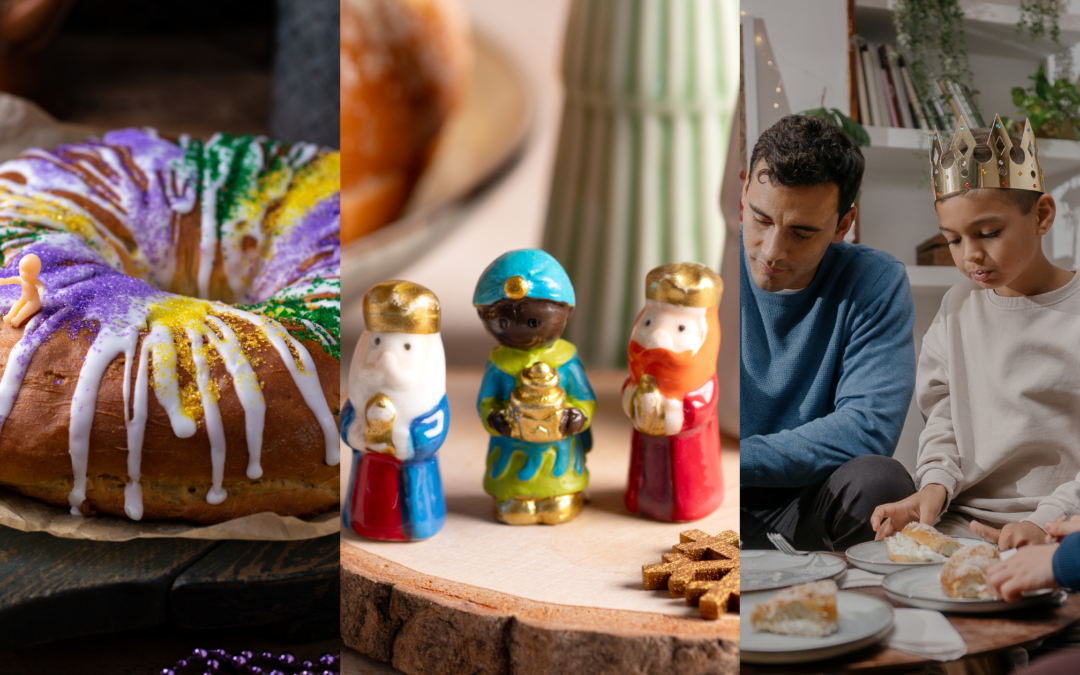Fun Family Traditions for the Epiphany
12 Days of Christmas and Beyond
Merry Christmas! While the secular world moves on from Christmas on December 26th, for Catholics, the season has only just begun! Christmas has twelve days, starting on Christmas Day and ending on January 5th, the vigil of Epiphany, traditionally known as “Twelfth Night.” In the traditional liturgical calendar, Christmastide is forty days and ends on February 2nd with Candlemas, also called the feast of the Purification of the Blessed Virgin Mary or the Presentation. In the midst of this, we have the feast of Epiphany, which is traditionally celebrated on January 6th (though some dioceses move the feast to the nearest Sunday). The word Epiphany means “manifestations” and celebrates the coming of the three wise men to adore Jesus—because this was Jesus’s first “manifestation” to the Gentiles.
There are many fun, liturgical ways to celebrate this feast in your family. Today I will share a few traditions from our family.
Epiphany Reading for Kids
First, we always read The Story of the Three Wise Kings by Tomie DePaola. It is a great book that explains Epiphany to children. It tells of the journey of the three wise men to find the new king and how King Herod tried to trick them into betraying Jesus. Tomie’s classic illustrations make this a great book to have in your home library. Tomie DePaola’s book, Strega Nona’s Gift, also presents Epiphany traditions in the context of a fun fiction story.
Fun with the Wise Men
Another tradition in our family is watching the wise men travel to the nativity set. When we put out our nativity set in Advent, we keep the wise men in the box or place them on the other side of the room. Just like how many families keep baby Jesus hidden until Christmas, we keep the wise men away until Epiphany. Once Jesus is born, we start moving the wise men closer to the nativity set each day, and they finally arrive on Epiphany. My young children have fun moving the wise men a little closer each day, and it is a good daily reminder of what we are celebrating this season.
In our family, the wise men also bring the children presents, just as they brought presents to baby Jesus. We keep these gifts small and simple, such as a book or game. To help our young children look forward to the Magi’s visit, we set out food for the wise men’s camels on the eve of Epiphany. Usually, this is some grass picked from our yard and sometimes includes some fruits and veggies. If you want to go all in, you could make camel tracks for your children to find on Epiphany morning to show the three kings were there!

The King Cake
Making a King Cake is another popular Epiphany tradition. A King Cake is a ring-shaped pastry, usually covered in icing and decorated with various colored sprinkles. Recipes for King Cakes vary depending on where you live, but a common theme is hiding a baby Jesus or another object inside the cake to see who finds it. Catholic Cuisine provides a recipe and different cultural traditions for King Cakes. There is also a fantastic step-by-step guide for making King Cakes in The Catholic Kids’ Cookbook, which we recently reviewed on this blog.
The Epiphany Home Blessing
Lastly, get your Epiphany holy water from your parish and do the annual Epiphany house blessing! Epiphany holy water is blessed on the eve of Epiphany and includes an extra exorcism and salt added to the regular holy water blessing. Any holy water is a powerful sacramental, but many highly revere Epiphany holy water for these extra elements.
The Epiphany home blessing takes place on Epiphany proper. The father of the home (or priest, if available) blesses the entire house room by room. He writes 20 + C + M + B + 25 above the door with blessed chalk. The 20 stands for the century and the 25 for the year (so, for example, it would be 26 next year). The letters stand for “Christus mansionem benedicat” (“May Christ bless this dwelling”), but a popular tradition says they are the initials of the wise men, Caspar, Melchior, and Balthasar. There are plenty of different versions of this blessing you can find online. I personally like using the version published by Catholic Culture.
These are some traditions we have observed with great benefit in our household. What about you? How do you celebrate the Lord’s Epiphany? To continue the discussion, join me and other Catholic homeschooling parents at our Homeschool Connections Community or our Facebook group!






